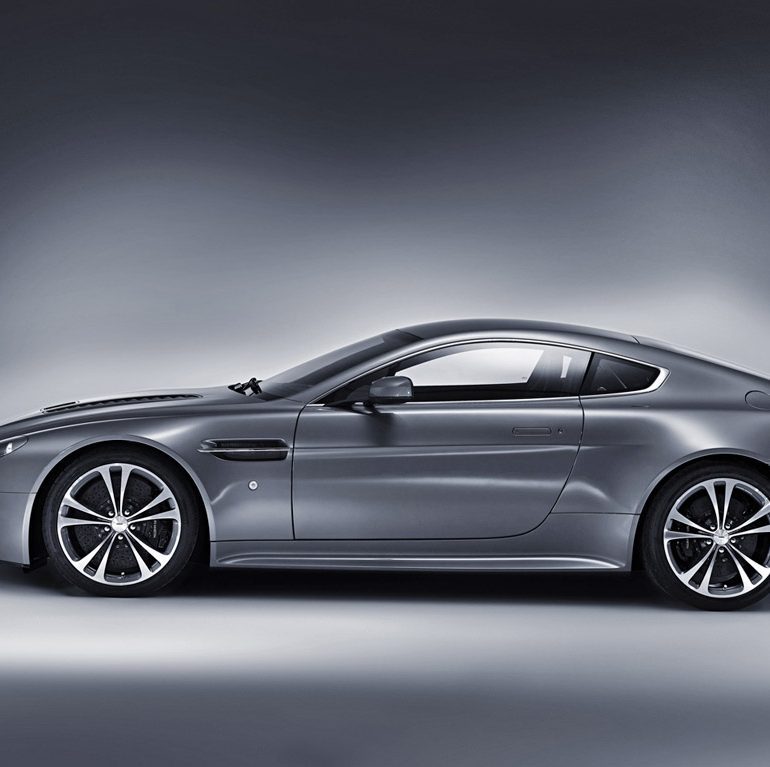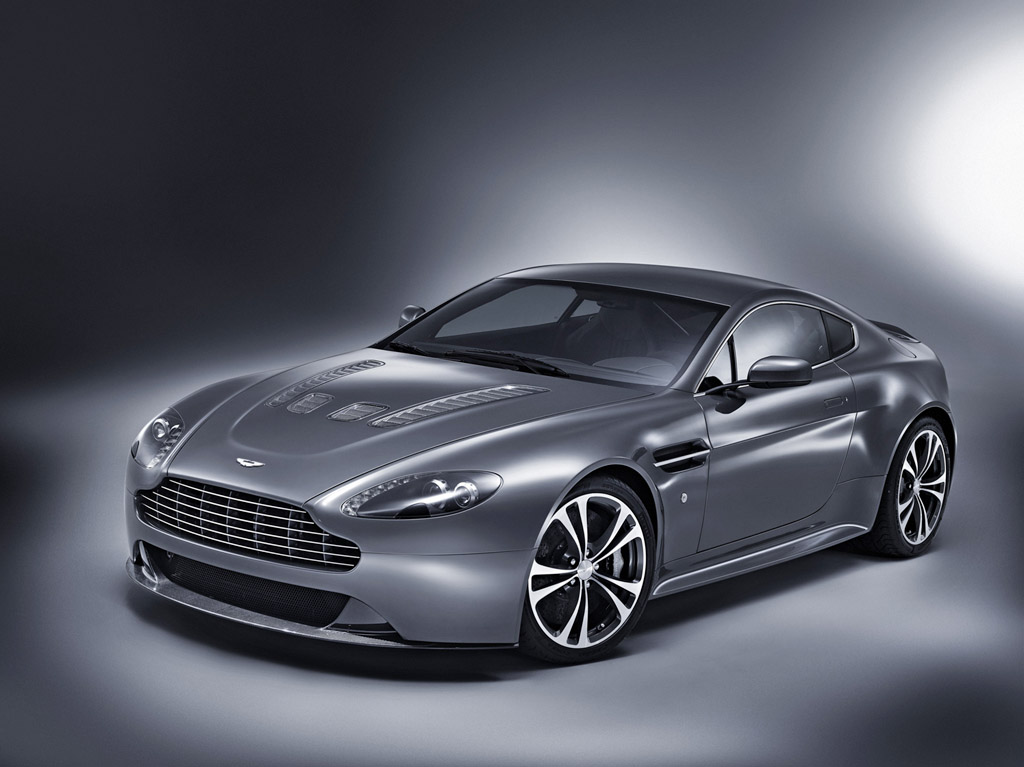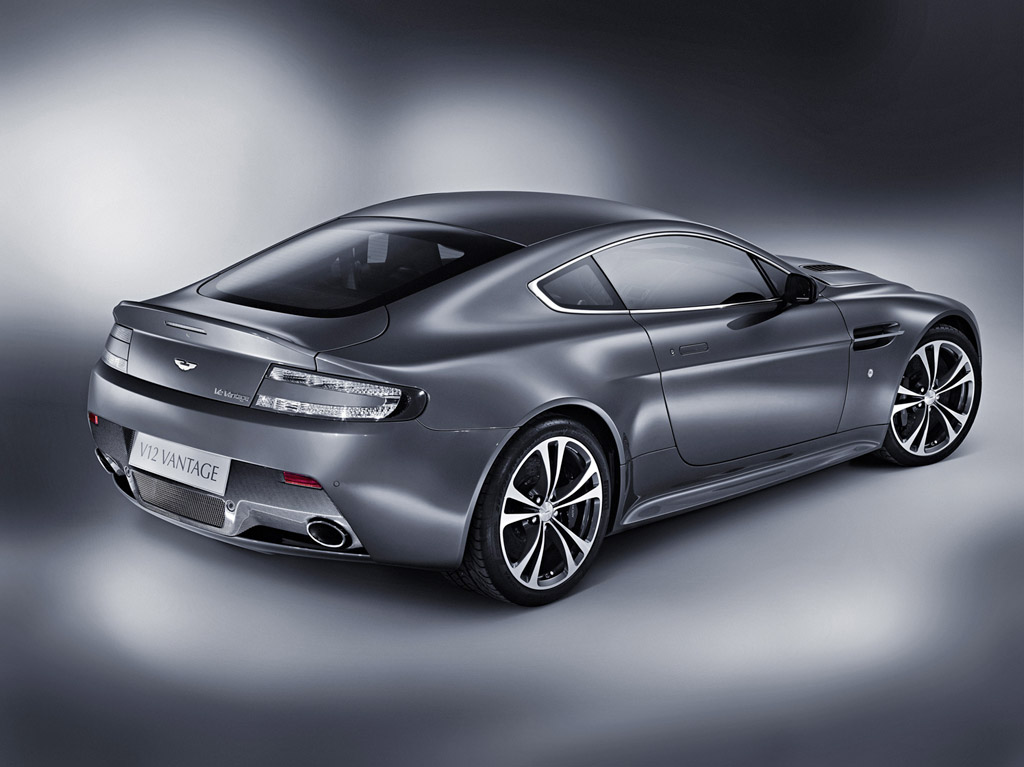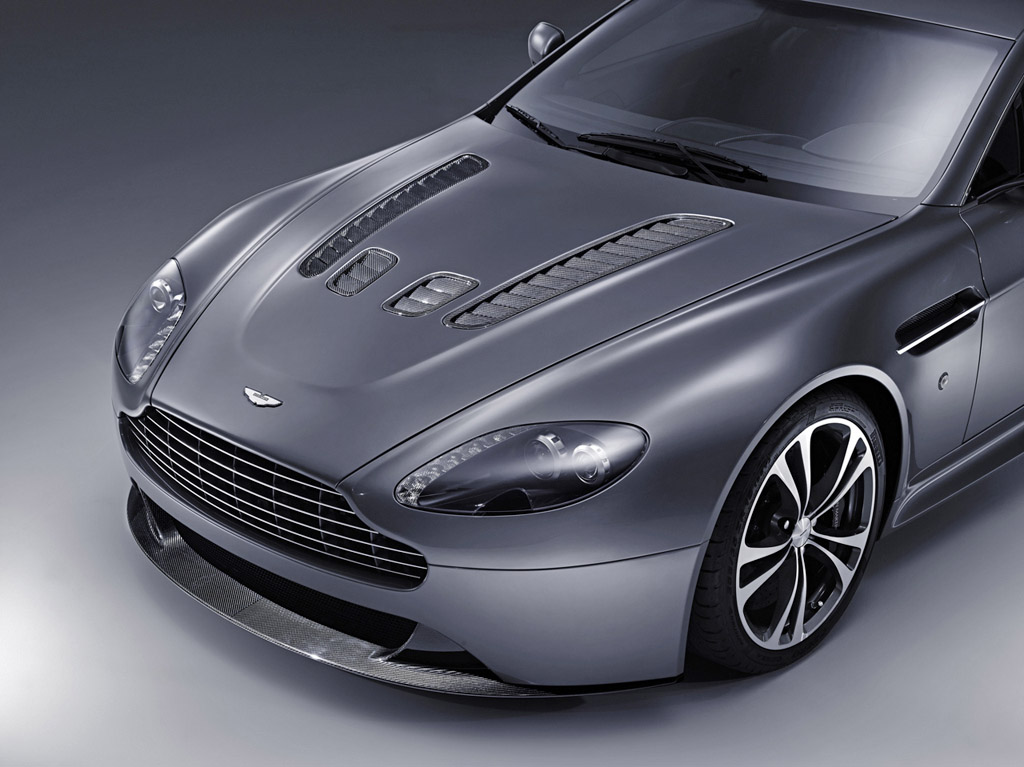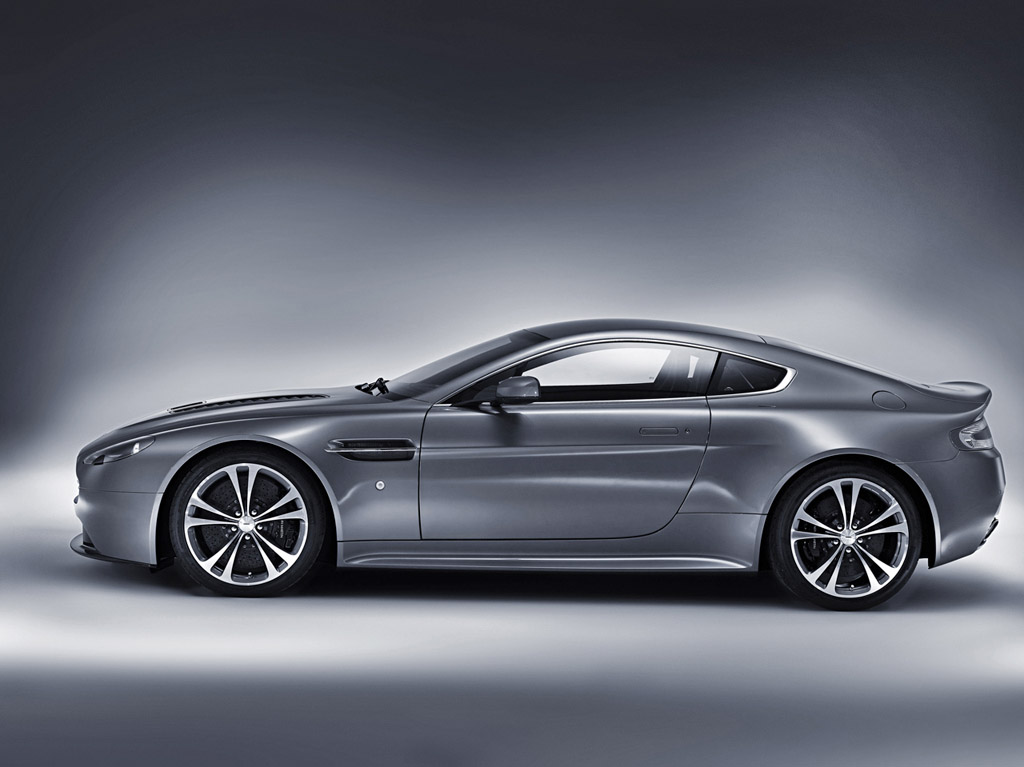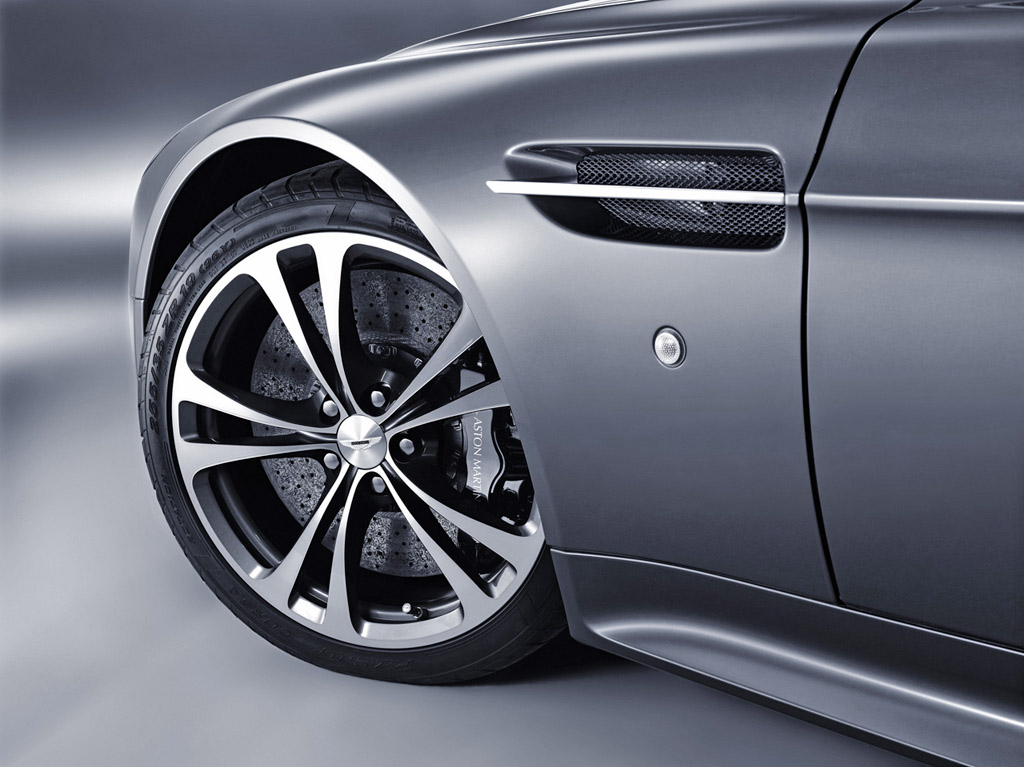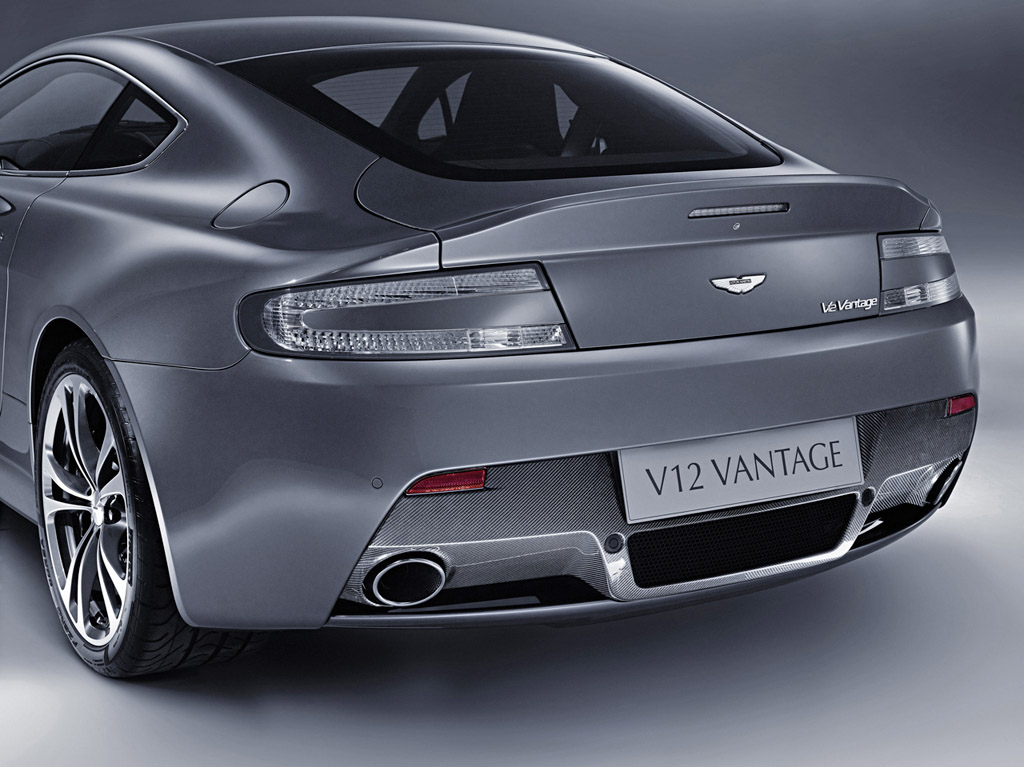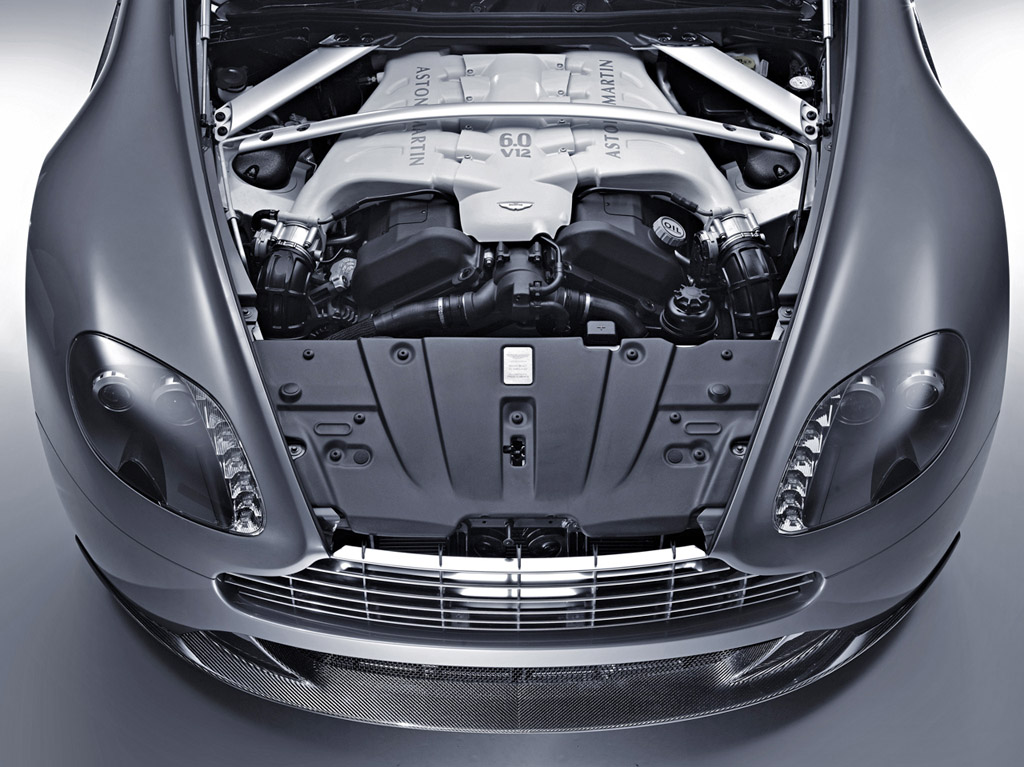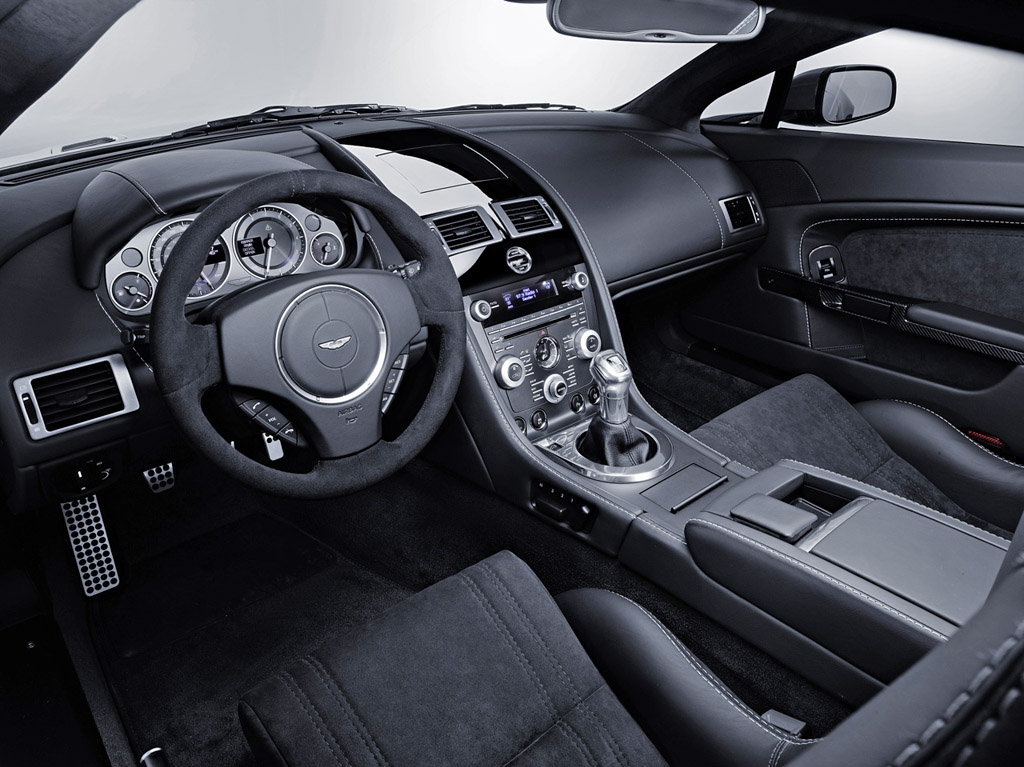2009 Aston Martin V12 Vantage
With new inner panels forward of the front bulkhead, Aston Martin shoehorned their ‘DBS’ V12 engine into the much smaller Vantage platform. Production trailed a concept version called the V12 Vantage RS that was made to celebrate the dedicated design center in Gaydon, Warwickshire.
Press Release
Gaydon, Warwickshire, Wednesday 4 February 2009 – Agility and outright performance formed the basis of design for the V12 Vantage to produce the most exciting incarnation of the Vantage model line-up to date. Aston Martin’s most powerful engine is fused with its most agile model to produce a truly exhilarating sports car.
The V12 power plant has been intelligently packaged into the Vantage’s compact form preserving its perfect proportions. While the external dimensions of the V8 Vantage remain unchanged, the internal front structure has been extensively revised forward of the suspension towers to house the larger engine, brake cooling system, and twin air intake system.
The engine was designed at Aston Martin’s headquarters in Gaydon, Warwickshire, and is hand-built at the company’s dedicated engine facility in Cologne, Germany. To achieve the power output, the engine features a number of enhancements over the standard 6.0-litre V12 found in the DB9. These include a ‘by-pass’ engine air intake port that opens up at 5500 rpm, a revised induction system and re-profiled air inlet ports that further improve airflow into the combustion chamber to improve performance.
The naturally aspirated 6.0-litre V12 hand-built engine produces 510 bhp (380 kW / 517 PS) at 6500 rpm and 570 Nm (420 lb ft) of torque giving the driver access to high levels of power and torque at all engine speeds. Unique to the V12 Vantage is a ‘Sport’ button which allows the driver to choose between two powertrain modes.
The default ‘normal’ provides a more progressive, throttle response, suited to more everyday situations, such as driving in urban areas, heavy traffic, or in challenging weather conditions. Selecting ‘Sport’ mode delivers a sharper throttle response together with a sportier exhaust note. This mode is designed for use in more dynamic driving situations where sharper responses are required, extracting the maximum performance from the car.
The V12 Vantage benefits from Aston Martin’s class leading all-alloy VH (Vertical Horizontal) architecture: a lightweight bonded platform that provides outstanding strength, rigidity and weight benefits.
Although the V12 engine weighs 100 kg more than the standard car’s engine, intelligent use of lightweight materials and components including carbon ceramic brakes, lighter forged aluminium wheels, lightweight inner rear quarter panels and optional lightweight seats have resulted in the overall kerb weight being only 50 kg heavier than its V8 sibling. The ensuing weight distribution provides for balance that is near perfect (51:49).
Exclusively available with a six-speed manual transmission, the gearbox uses a transaxle configuration to aid weight distribution. The V12 Vantage’s final drive ratio has also been modified from 3.909:1 to 3.71:1. This allows the Vantage to take full benefit of the high torque levels delivered by the engine to provide both flexibility at lower engine speeds as well as a high top speed of 190 mph.
For a car possessing such racing pedigree, the V12 Vantage surprises with its day to day usability. Featuring a luggage capacity of 300 litres and a traditional tailgate, coupled with ample stowage space to the rear of the seats, touring and trips away are made easy. Gear changes are light and precise requiring minimum effort from the driver and a longer final drive ratio extracts the most from the power and torque available to improve driveability. The communicative chassis provides comfort on long journeys and thrilling feedback with energetic driving.
Aston Martin V12 Vantage: Control
Aston Martin is the only sports car manufacturer to offer a race car for every GT category. The DBR9 has enjoyed year-on-year success all over the world in the GT1 category including class wins at Le Mans two consecutive years running. Customer teams are consistently achieving podium finishes with the DBRS9 in GT3 while 2008 was a test and development year for the newly-launched Vantage GT2. The Vantage N24 achieved GT4 class wins all over Europe since its launch in 2006. Common to both road and race cars is the VH architecture platform upon which the V12 Vantage is based. Consisting of extruded, pressed and cast aluminium alloy, bonded together with aerospace-grade adhesive, the backbone of the car works collaboratively with the powertrain and suspension to create an exceptionally responsive driving experience.
Near-perfect weight distribution is achieved with a transaxle-mounted gearbox which sees 85% of the car’s weight lying between the front and rear axles. Aston Martin engineers have positioned the engine as far back and as low as possible in the car to contribute to the 51:49 weight distribution. Containing the weight within the V12 Vantage’s wheelbase results in a low polar moment of inertia, creating a car which has a natural agility.
Superb handling characteristics are at the heart of the V12 Vantage; the rear suspension has been modified, with a more compact dual-rate spring design, in order to accommodate a wider wheel and tyre combination, improving grip and traction. The ride height of the V12 Vantage has also been lowered by 15 mm, while the spring rates have been stiffened by 45% and the anti-roll bars are 15% (front) and 75% (rear) stiffer than the standard car. These measures serve to lower the car’s centre of gravity and reduce the amount of roll experienced during cornering, further increasing the V12 Vantage’s dynamic capabilities.
V12 Vantage’s diamond-turned 19” alloy wheels are manufactured using a forging process, saving a total of 5 kg, which reduces the overall weight of the car, as well as enhancing both ride and handling characteristics.
The new 10 spoke wheels are clad with wider Pirelli P Zero Corsa tyres which have been specifically designed for the V12 Vantage enabling it to generate the highest cornering forces of any Aston Martin; up to a peak of 1.3g is possible.
The V12 Vantage comes as standard with Carbon Ceramic Matrix (CCM) brakes, providing immense stopping power. Benefitting from carbon fibre’s inherent properties, CCM brakes are not only tougher than conventional cast iron discs but also dissipate heat more rapidly resulting in less fade during sustained dynamic driving.
Air ducts positioned within the lower front grille feed air directly onto the discs to aid cooling and optimise braking performance.
The V12 Vantage’s CCM discs are 398 mm in diameter at the front and 360 mm at the rear while the brake callipers feature six pistons at the front, four at the rear and have a larger brake pad area compared to the V8 Vantage. The CCM brakes are some 12.5 kg lighter than conventional brakes reducing not only the overall weight of the car but also the unsprung mass specifically. This benefits ride and handling and lower rotational mass helps improve acceleration.
In line with the character of the V12 Vantage, a revised Dynamic Stability Control (DSC) system permits the driver, through three modes of operation, to manage how the system intervenes during more challenging driving situations.
In default operation, the DSC is automatically switched on. Depressing the DSC button for two seconds selects ‘track mode’ which raises the manner and threshold at which the system intervenes allowing the driver to explore the limits of the car’s considerable handling capabilities. Depressing the button for four seconds will switch off DSC completely.
Aston Martin V12 Vantage: Design
Based on the stunning V8 Vantage originally launched in 2005, the V12 Vantage subtly hints at its sporting intent with its controlled aggression and lower, purposeful stance. It is manufactured at Aston Martin’s global headquarters in Gaydon, Warwickshire where all Aston Martins benefit from class leading levels of craftsmanship fused with cutting-edge technology.
Avoiding purely cosmetic changes, each modified panel on the V12 Vantage has been altered to enhance the vehicle’s dynamics. Knowledge gained from the N24 race car programme has led to body revisions designed to improve downforce while not increasing the drag coefficient of the car. Each form follows its functional requirements, while also contributing to stunning design – a revised front splitter channels cooling air to the brakes and to the radiator while also producing increased down force. Bonnet louvres remove heat from the engine bay and help increase front-end down force by limiting the built up air pressure under the bonnet. New side sills derived from the N24 race car channel air towards the rear of the car rather than under it, reducing rear-end lift. A more pronounced boot ‘flip’ and the new rear carbon fibre diffuser work in harmony with a redesigned rear under floor to channel air through the new high-capacity oil cooler and maintain an area of low pressure under the rear of the car producing increased down force and aiding grip.
Complementing the taut exterior, the V12 Vantage’s interior hints at the car’s dynamic capabilities. The optional carbon fibre and Kevlar® composite seats cosset the driver providing support during spirited driving while remaining comfortable on long journeys. Saving 17 kg per car, the seats which are manufactured by a supplier to the motorsport and aviation industries are hand-trimmed by craftsmen at the Gaydon production facility.
The interior of the V12 Vantage provides the ideal environment for the focused driver to extract the very best from every element of the car. The extensive use of high quality materials with exceptional attention to detail placed throughout the cabin results in an unparalleled level of finish. The instrument cluster has been revised with even clearer dials to allow the driver to completely focus on the information being relayed from the car. The door pulls are made from beautifully-prepared carbon fibre where even the carbon weave has been meticulously aligned – a sign of exceptional craftsmanship. Additional light weight materials in the form of Alcantara are used to save valuable weight throughout the cabin. The unique ambience of the V12 Vantage interior beautifully marries the functional requirements of a driver-focussed sports car with the comfort of an everyday practical car.
Story by Aston Martin
In Detail
| type | Series Production Car |
| engineers | Ian Minards |
| price $ | $ 209,000 |
| price £/td> | £135,000 |
| engine | V12 |
| position | Front-Mid, Longitudinal |
| block material | Aluminum Alloy |
| valvetrain | DOHC 4 Valves per Cyl |
| fuel feed | Multipoint Injection |
| displacement | 5935 cc / 362.18 in³ |
| compression | 10.9:1 |
| power | 380.3 kw / 510 bhp @ 6500 rpm |
| specific output | 85.93 bhp per litre |
| bhp/weight | 303.57 bhp per tonne |
| torque | 570 nm / 420.4 ft lbs @ 5750 rpm |
| body / frame | Bonded Aluminum Monocoque |
| driven wheels | RWD w/LSD |
| wheel type | Aluminum Alloy |
| front tires | Pirelli P Zero Corsa 255/35 ZR19 |
| rear tires | Pirelli P Zero Corsa 295/30 ZR19 |
| front brakes | Ventilated Carbon Cermamic Discs w/6-Piston Calipers, ABS, EBD |
| rear brakes | Ventilated Carbon Cermamic Discs w/4-Piston Calipers, ABS, EBD |
| front wheels | F 48.3 x 22.9 cm / 19 x 9 in |
| rear wheels | R 48.3 x 27.9 cm / 19 x 11 in |
| steering | Rack & Pinion |
| f suspension | Double Wishbones w/Coil Springs, Anti-Roll Bar, Monotube Dampers |
| r suspension | Double Wishbones w/Coil Springs, Anti-Roll Bar, Monotube Dampers |
| curb weight | 1680 kg / 3704.4 lbs |
| weight distro | 51 % / 49 % |
| wheelbase | 2600 mm / 102.4 in |
| length | 4380 mm / 172.4 in |
| width | 1865 mm / 73.4 in |
| height | 1241 mm / 48.9 in |
| transmission | 6-Speed Manual Transaxle w/Torque Tube |
| final drive | 3.71:1 |
| top speed | ~305.71 kph / 190 mph |
| 0 – 60 mph | ~4.1 seconds |
| 0 – 100 mph | ~9.2 seconds |
| 0 – 1/4 mile | ~12.5 seconds |
| fuel econ epa | 20 L/100 km or 11.64 mpg-us |
| city fuel econ epa | 21.38 L/100 km or 11 mpg-us |
| hwy fuel econ epa | 13.84 L/100 km or 17 mpg-us |
| fuel capacity | 80 litres or 21.12 gal. |


